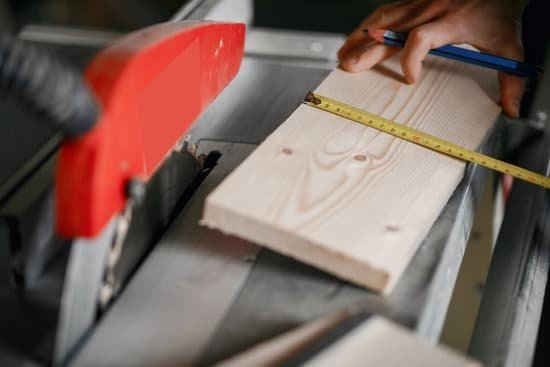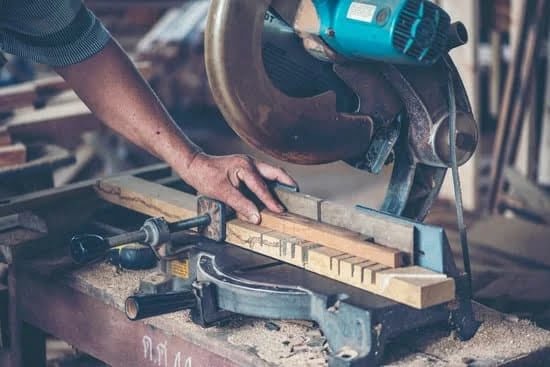Are you wondering how to arrange a woodworking shop? A well-organized woodworking shop is essential for efficiency, safety, and productivity. From setting up the layout to personalizing the space, creating an effective and functional woodworking shop requires careful planning and consideration of various factors. This article will guide you through the process of arranging a woodworking shop, providing valuable insights on layout, essential tools, storage solutions, workstation setup, safety measures, maintenance, and personalization.
Setting up a woodworking shop begins with understanding the importance of organization and efficient use of space. By creating a well-organized environment, woodworkers can maximize productivity and create a safe working environment. In this article, we will explore the key elements that contribute to arranging a woodworking shop in an optimal way.
The layout of a woodworking shop plays a crucial role in determining the overall functionality of the space. It involves analyzing the available space and creating a floor plan that allows for efficient workflow and accessibility.
Additionally, identifying essential tools and equipment, implementing storage solutions, establishing proper workstations, ensuring safety measures are in place, maintaining cleanliness, and personalizing the space are all vital components in arranging a woodworking shop. Following these guidelines will lead to enhanced productivity, comfortability in functionality while carrying out various woodworking tasks within your workspace.
Setting Up the Layout
When it comes to arranging a woodworking shop, one of the crucial steps is setting up the layout. This involves determining the available space and creating a floor plan that maximizes efficiency and functionality. Whether you have a small corner in your garage or a dedicated workshop, understanding how to make the most of the space is essential.
Assessing Available Space
The first step in setting up the layout of your woodworking shop is to assess the available space. Take measurements and consider any obstacles or limitations within the area. It’s important to take into account any existing structures, such as support beams or electrical outlets, that may impact the layout of your shop.
Creating a Floor Plan
Once you have a good understanding of the available space, it’s time to create a floor plan for your woodworking shop. Consider factors such as workflow, access to utilities (such as power outlets and ventilation), and any specific needs for different woodworking tasks. A well-designed floor plan will ensure that you can move around the shop easily and access tools and equipment without obstacles.
Optimizing Space
In addition to creating a floor plan, optimizing the space in your woodworking shop is crucial for efficiency. Utilize vertical storage options such as cabinets, shelves, and pegboards to keep tools and materials off the floor and organized. Consider mobile workstations or tool carts that can be moved around as needed. By maximizing vertical and mobile storage solutions, you can make the most of even limited space in your woodworking shop.
By understanding how to arrange a woodworking shop by setting up the layout effectively, you can ensure that your workspace is optimized for productivity and safety. A well-planned layout will facilitate smooth workflow and efficient use of tools and equipment while minimizing clutter and obstacles.
Essential Tools and Equipment
When it comes to arranging a woodworking shop, one of the most crucial aspects is ensuring that you have the essential tools and machinery for a functional work environment. Without the right equipment, it can be challenging to efficiently carry out woodworking tasks and projects. Here are some key considerations for identifying the necessary tools and machinery for your woodworking shop.
Assessing Your Needs
Before purchasing or organizing any tools and machinery, it’s important to assess your specific woodworking needs. Consider the type of projects you typically work on and the level of precision required. For example, if you primarily work on large-scale carpentry projects, you may need a table saw and a jointer. On the other hand, if you focus on intricate detailing, investing in high-quality chisels and carving tools may be more beneficial.
Investing in Quality Equipment
Quality should always be a top priority when selecting tools and machinery for your woodworking shop. While it may be tempting to opt for budget-friendly options, investing in high-quality equipment can ultimately save you time and money in the long run. Quality tools are more durable, provide better results, and often have longer warranties.
Organizing Your Tools
Once you’ve identified and acquired the necessary tools and machinery for your woodworking shop, it’s essential to organize them effectively. Utilize storage solutions such as pegboards, tool chests, or wall-mounted racks to keep your tools easily accessible and well-organized. Having a designated place for each tool not only helps maintain order but also improves efficiency during woodworking tasks.
By carefully considering your specific needs, investing in quality equipment, and implementing effective organization methods, you can successfully identify the necessary tools and machinery for a functional woodworking shop. Properly equipping your shop will not only enable you to carry out projects with ease but also contribute to a safer working environment.
Storage Solutions
A well-organized woodworking shop is essential for a smooth and efficient workflow. One of the key aspects of arranging a woodworking shop is maximizing space and organizing tools, materials, and supplies. By implementing effective storage solutions, woodworkers can ensure that their workspace is clutter-free and all necessary items are easily accessible.
When considering how to arrange a woodworking shop, it is important to evaluate the available space and plan for storage accordingly. Utilizing wall-mounted shelves, cabinets, pegboards, and drawers can help make the most of vertical space while keeping the floor area clear for maneuvering large materials and equipment. Additionally, investing in mobile tool carts and workbenches can provide flexibility in reconfiguring the layout based on specific projects or tasks.
Organizing tools, materials, and supplies in a logical manner contributes to an efficient workflow. Grouping similar items together and labeling storage containers can save time when searching for specific tools or materials. It is also beneficial to designate specific areas for different types of tools (e.g. hand tools, power tools) and materials (e.g. lumber, hardware) to maintain order in the shop.
Furthermore, incorporating storage solutions that promote safety is crucial when arranging a woodworking shop. Storing flammable materials away from potential ignition sources, securing heavy machinery to prevent tipping or falling, and using proper storage for sharp tools are all essential safety measures to consider within the overall organization of the shop.
| Storage Solution | Importance |
|---|---|
| Wall-mounted shelves | Maximizes vertical space |
| Mobile tool carts | Provides flexibility in layout |
| Labeled storage containers | Saves time in locating items |
Workstation Setup
When it comes to arranging a woodworking shop, creating efficient and ergonomic workstations is crucial for maximizing productivity and minimizing fatigue. Whether you’re working on intricate detail work or heavy-duty projects, having designated areas for different tasks can greatly enhance your woodworking experience. Here are some key tips on how to arrange your workstations in a woodworking shop:
- Consider the type of woodworking tasks you frequently engage in, such as hand-tool work, power-tool use, assembly, sanding, and finishing.
- Determine the layout of your shop based on the available space and workflow considerations. For example, you may want to place heavier machinery closer to the entrance for ease of access when bringing in materials.
- Invest in sturdy workbenches that can handle different types of woodworking tasks and provide ample space for your tools and materials.
- Organize your tools based on functionality and frequency of use. For example, keep frequently used hand tools within arm’s reach while storing less commonly used tools in designated storage areas.
Having efficient and ergonomic workstations not only improves your woodworking efficiency but also reduces the risk of injuries and strain associated with long hours of woodworking. By carefully planning and arranging your workstations, you can create a more comfortable and productive environment for pursuing your woodworking projects.
Remember to regularly assess the layout and organization of your workstations as you gain more experience in using them. Making adjustments according to how you actually use the space will help optimize the arrangement for your individual workflow preferences.
Safety Measures
Safety in a woodworking shop is of utmost importance to prevent accidents and injuries. Implementing safety protocols and using the right equipment can ensure a secure working environment for all woodworkers. One of the first steps in prioritizing safety is to designate specific areas for different tasks, such as cutting, sanding, and assembly. This helps minimize the risk of accidents by ensuring that each activity has its own space and tools.
In addition to proper shop layout, it is crucial to invest in high-quality safety equipment. This includes but is not limited to, safety goggles, ear protection, dust masks, and gloves. These items are essential for protecting against potential hazards in a woodworking shop such as flying debris, loud machinery noise, airborne particles from sanding or cutting, and splinters.
Equally important is the implementation of safety protocols and training for all individuals working in the woodworking shop. This may involve conducting regular safety briefings or workshops to remind employees of best practices when using tools and machinery. It’s also beneficial to have clear signage indicating safety procedures and guidelines posted throughout the shop.
| Safety Measures | Importance |
|---|---|
| Designating specific areas for tasks | Minimizes risk of accidents |
| Investing in high-quality safety equipment | Protects against potential hazards |
| Implementing safety protocols and training | Ensures adherence to best practices |
Maintenance and Upkeep
Maintaining a clean and organized woodworking shop is essential for both productivity and safety. A well-maintained shop not only creates a more pleasant working environment but also prolongs the life of your tools and machinery. To achieve this, it is important to establish a routine for cleaning, maintaining, and organizing the shop.
Here are some key steps to include in your maintenance and upkeep routine:
1. Daily Cleaning: Sweep the floors, clear away any wood chips or sawdust, and wipe down work surfaces to keep the shop tidy. This not only prevents accidents but also helps maintain the quality of your work.
2. Weekly Maintenance: Schedule time each week to inspect and maintain your tools and machinery. This might involve sharpening blades, lubricating moving parts, or checking for any signs of wear or damage.
3. Monthly Organizing: Take some time each month to declutter and reorganize your shop. Proper storage solutions are crucial for maximizing space and efficiency in a woodworking shop.
By incorporating these tasks into a regular routine, you can ensure that your woodworking shop remains in top condition, allowing you to focus on your craft without being hindered by clutter or malfunctioning equipment.
Personalizing the Space
When it comes to arranging a woodworking shop, personalizing the space is an important aspect that can greatly impact the efficiency and enjoyment of working in the shop. Whether you are a professional woodworker or a hobbyist, creating a space that reflects your individual workflow and preferences can make a significant difference in the overall experience. This section will explore some key considerations for personalizing your woodworking shop and optimizing it to suit your specific needs.
One of the first steps in personalizing your woodworking shop is to take stock of your individual workflow and preferences. Consider the type of projects you typically work on, the tools and equipment you use most frequently, and any specific requirements you may have based on your working style. By understanding these factors, you can start to tailor your shop layout, storage solutions, and workstation setup to better accommodate your unique needs.
Another important aspect of personalizing your woodworking shop is adding personal touches that make the space feel inviting and inspiring. This could include decorating the walls with artwork or motivational quotes, integrating plants or other greenery to bring some life into the space, or incorporating elements that reflect your personality and interests. Creating a visually appealing and personalized environment can help foster creativity and make spending time in the shop more enjoyable.
Additionally, optimizing the shop for individual workflow and preferences may also involve customizing certain aspects of the space to improve functionality. This could mean making modifications to workbenches or tool stands to better suit your height or reach, installing additional lighting to improve visibility in key work areas, or adding specific accessories or attachments to machinery to enhance their performance for your particular needs.
By tailoring these elements to fit your individual requirements, you can create a workspace that is both efficient and comfortable for you.
Overall, personalizing your woodworking shop is an essential step in creating an environment that supports your creativity, productivity, and overall satisfaction with woodworking. By considering your unique workflow and preferences, adding personal touches, and customizing certain aspects of the shop to better fit your needs, you can optimize the space to be truly welcoming and functional for you.
Conclusion
In conclusion, arranging a woodworking shop is a crucial aspect of ensuring efficiency, productivity, and safety in any woodworking business or hobby. By carefully planning the layout, identifying essential tools and equipment, maximizing storage solutions, creating ergonomic workstations, implementing safety measures, and establishing maintenance routines, woodworkers can optimize their workspace for maximum functionality. Additionally, personalizing the space to individual preferences can further enhance the overall workflow and satisfaction of working in the shop.
A well-organized woodworking shop not only allows for easier access to tools and materials but also promotes a safer and more enjoyable working environment. With everything in its place and a clear layout to follow, the risk of accidents and injuries is significantly reduced. Furthermore, a tidy and organized shop can lead to greater efficiency and productivity as it minimizes time spent searching for tools or cleaning up cluttered work areas.
By following the guidelines outlined in this article on how to arrange a woodworking shop, individuals can create a space that is both practical and personalized to their specific needs. Whether it’s for professional use or personal enjoyment, investing time and effort into setting up a well-arranged woodworking shop will undoubtedly result in a more enjoyable and efficient woodworking experience.
Frequently Asked Questions
How Do You Organize a Workshop?
Organizing a workshop involves careful planning and consideration of the workshop’s purpose and goals. Start by identifying the topics to be covered, determining the target audience, and setting clear objectives. Then, choose a suitable venue, gather necessary materials, and promote the workshop effectively to attract participants.
How Do You Organize Wood in a Wood Shop?
Organizing wood in a woodshop requires setting up a logical system for storing different types of wood. This could involve categorizing the wood based on size, type, or intended use, and then using racks, shelves, or bins to keep everything organized and easily accessible.
Additionally, it’s important to maintain a clean and clutter-free workspace to ensure safety and efficiency.
What Is the Best Way to Organize a Shop?
The best way to organize a shop depends on its specific purpose and needs. However, some general tips include keeping similar items together for easy access, utilizing storage solutions such as shelves or bins to keep things tidy, maintaining a clear and unobstructed workspace, and regularly decluttering and reorganizing as needed to optimize efficiency.
Additionally, labeling items or creating an inventory system can help keep track of inventory and prevent disorganization over time.

Hi everyone! I’m a woodworker and blogger, and this is my woodworking blog. In my blog, I share tips and tricks for woodworkers of all skill levels, as well as project ideas that you can try yourself.





